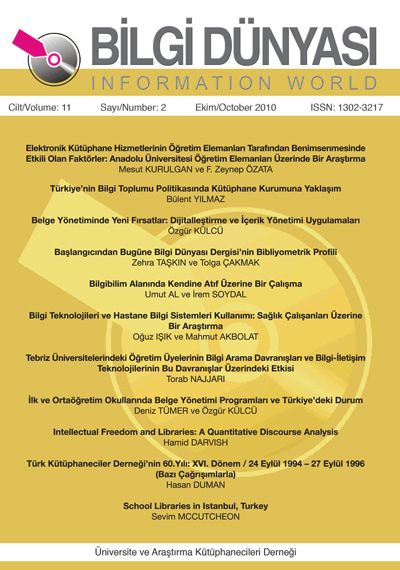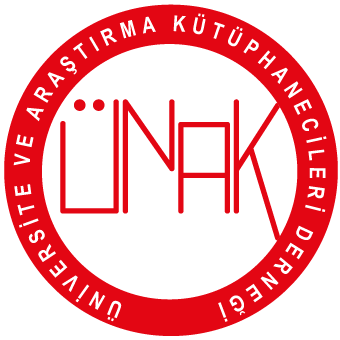Bilgibilim Alanında Kendine Atıf Üzerine Bir Çalışma
DOI:
https://doi.org/10.15612/BD.2010.241Anahtar Kelimeler:
Bibliyometri, Kendine atıf, Bilgibilim dergileri, Türkiye adresli makalelerÖzet
Bu makalede bibliyometrik araştırmalarda sıklıkla üzerinde durulan bir konu olan kendine atıf olgusu incelenmektedir. Çalışma bir yönden de atıf dizinleri kapsamında Türkiye’nin dünya bilgibilim literatürüne olan katkısını ortaya koymaktadır. Çalışmada veri kaynağı olarak Social Sciences Citation Index (SSCI) kapsamında yer alan bilgibilim dergilerinde yayımlanmış Türkiye adresli makaleler kullanılmaktadır. Bu çalışma kapsamında yazar, kurum, ülke ve dergi bazında kendine atıf analizleri gerçekleştirilmiştir. Türkiye’nin 1974-2008 yılları arasında bilgibilim dergilerinde toplam 119 makalesi bulunmaktadır. Bu makalelerin tamamının dili İngilizcedir. Türkiye adresli araştırmacıların en çok makale yayımladığı bilgibilim dergisi Information Processing & Management’dır. Bilgibilim dergilerindeki Türkiye adresli 119 makaleden 99’u en az bir kez olmak üzere atıf dizinleri kapsamındaki yayınlardan atıf almıştır. Türkiye adresli makalelere yapılan toplam atıf sayısı 621’dir. Ülke kendine atıf oranı %46; kurum kendine atıf oranı %28; yazar kendine atıf oranı %26; dergi kendine atıf oranı ise %20’dir. Kendine atıf oranları Türkiye’nin bilgibilim alanındaki dışa yönelimi ile ilgili olarak fikir vermektedir.
İndirmeler
Yayınlanmış
Nasıl Atıf Yapılır
Sayı
Bölüm

Bu çalışma Creative Commons Attribution 4.0 International License ile lisanslanmıştır.






